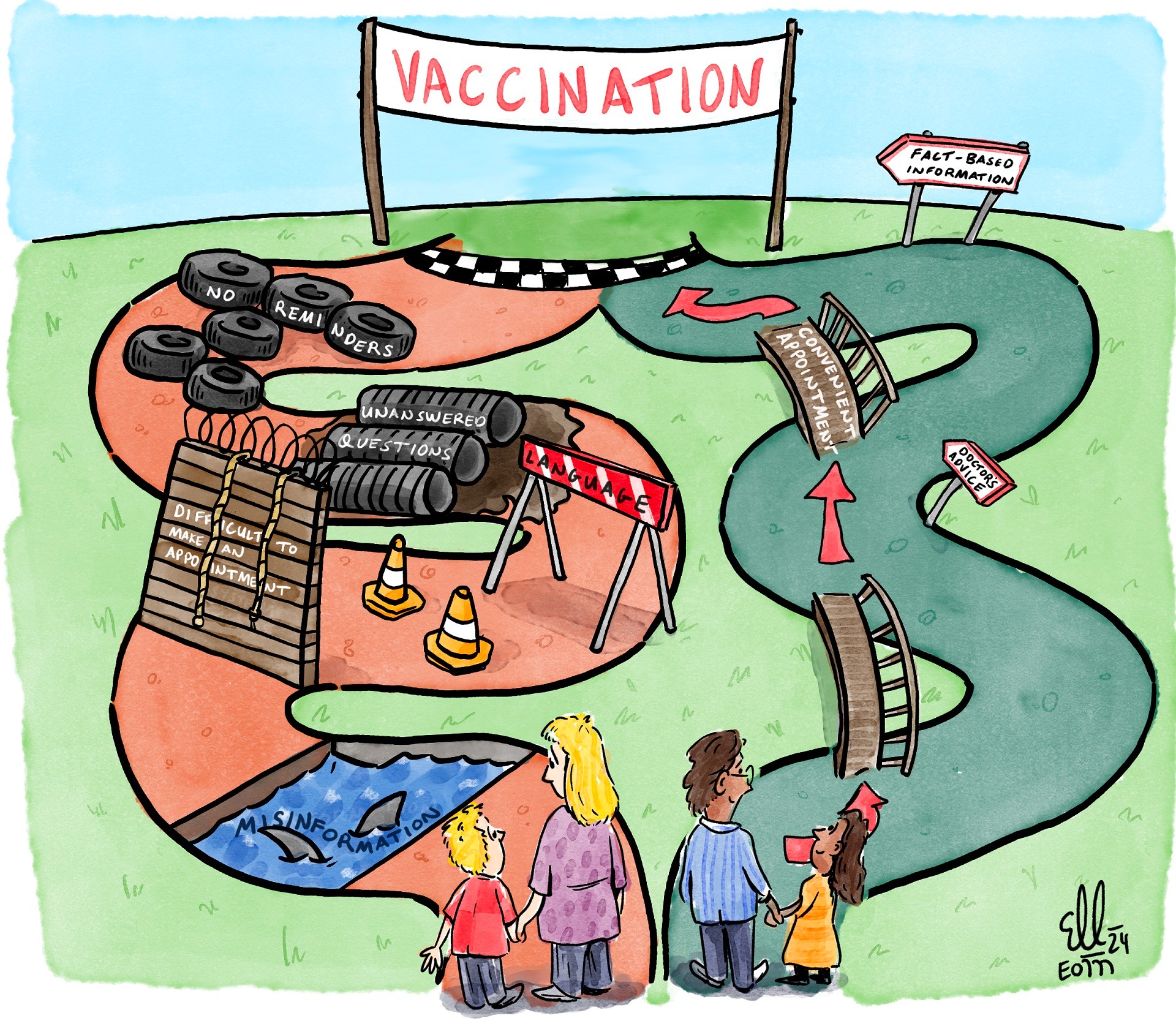Each year, over 500 000 children in the WHO European Region do not receive one or more recommended vaccinations. With WHO guidance and European Union (EU) support, several countries in the Region are taking steps to understand why so many children are being missed, and what can be done to ensure broader protection from vaccine-preventable diseases in the future.
The recent resurgence of measles and pertussis across the Region illustrates the potential cost of not reaching all children with routine vaccinations. Gaps in coverage with recommended vaccines are present in almost all countries, but the underlying causes can be highly context-specific. They can include lack of information or mistrust of vaccines among parents/caregivers, but also structural barriers or lack of capacity among health workers to address concerns and promote vaccination.
In many contexts, coverage is lower among certain population groups, potentially due to inequities in access to information and/or service delivery. Working to ensure that everyone has equitable access to the health protection that vaccines offer contributes to individual and regional health security.
WHO/Europe supports countries to reduce immunization inequities based on a stepwise approach that seeks to identify the underlying causes of coverage gaps and tailor strategies to effectively address them. This approach emphasizes the importance of:
- using data to identify immunity gaps and potential inequities
- gathering insights to understand the reasons behind these gaps
- acting locally to address the unique needs of those affected.

Country example: Azerbaijan
In Azerbaijan, data triangulation using local measles/mumps/rubella (MMR) vaccination coverage data, disease surveillance data and local stakeholders’ knowledge was applied to identify regions with low vaccination coverage.
Behavioural insights research conducted in 2023 with WHO guidance included focus group discussions with health workers and parents/caregivers in the identified regions. Among key barriers, participants cited vaccine safety concerns, information gaps, and an inability of health workers to discuss and promote vaccination.
To address these barriers, community events were organized in the targeted areas by national stakeholders, the Ministry of Health and the Administration of Regional Medical Divisions (TABIB) together with WHO and the United Nations Children’s Fund (UNICEF). Parents and caregivers could voice their concerns and receive accurate information from respected paediatricians. Children could also receive missed vaccinations.
During these events, 176 previously unvaccinated or partially vaccinated children received vaccinations, and in the following months clinics in all of the targeted regions observed a 24% average reduction in vaccination refusals.
To maintain this progress, work has continued under the direction of the Ministry of Health and TABIB throughout 2024 and 2025, both at the national level to strengthen the capacities of health workers and at the community level to assess needs and hold community events. Additionally, health worker communication training has begun with the support of WHO in selected regions.
Country example: Lithuania
In Lithuania, WHO conducted a rapid assessment in 2024 to identify barriers to and drivers of vaccination among Ukrainian refugees living in Lithuania. It found that while refugees generally accepted childhood vaccinations, they faced challenges in getting their children vaccinated, such as a lack of easily accessible information about compatibility with vaccinations offered in Ukraine, long waiting times and language barriers. Hesitancy to vaccinate was more pronounced in relation to vaccinations for adults, particularly against COVID-19 and influenza.
In separate focus group discussions, health providers noted inconsistent outreach and follow-up practices as significant barriers, as well as a lack of comprehensive data on the vaccination status of refugees.
Recommendations based on the research findings included improving targeted communication with refugee communities, providing clear protocols for vaccinating children whose vaccination records are not available, enhancing access to health-care services beyond vaccination such as mental health support, and consolidating health-care information to better support Ukrainian refugees. WHO is supporting national health authorities with implementing these recommendations.
Country example: Ukraine
In Ukraine, WHO conducted a behavioural insights study in August 2024 to identify barriers to and drivers of routine childhood vaccination among internally displaced populations and non-displaced populations in frontline areas. The study revealed significant challenges, including lack of free vaccines, doubts about vaccine quality among parents/caregivers, and logistical issues exacerbated by the ongoing conflict. Despite these barriers, most parents/caregivers expressed positive attitudes towards vaccination, driven by trust in doctors and evidence-based medicine.
Following a workshop to review study findings in January 2025, immunization equity improvement plans were developed by each region to address their unique challenges, including steps to tailor communications, improve vaccine access and enhance health-care support.
Strong partnership with the EU
The EU and WHO/Europe have joined forces on several projects in recent years to help countries achieve and sustain high and equitable immunization coverage. A current project in Bulgaria, Hungary, Romania and Poland focuses on improving coverage among vulnerable population groups, with special emphasis on Roma communities, which are often disproportionately affected by vaccine-preventable diseases.




